Culture
Drape In Tradition: Five Handloom Picks To Illuminate Your Deepavali Celebrations
Shefali Vaidya
Nov 11, 2023, 01:34 AM | Updated 01:34 AM IST
Save & read from anywhere!
Bookmark stories for easy access on any device or the Swarajya app.
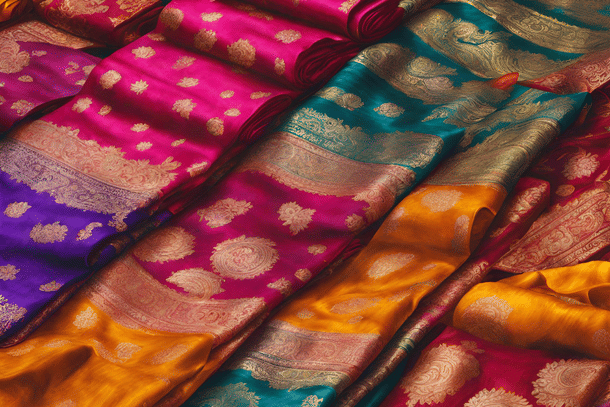

Deepavali is a festival that celebrates the Indian aesthetic in all its myriad manifestations. The festival is also a great occasion to showcase the arts and crafts of Bharat.
Everyone buys new clothes for Deepavali. The sheer elegance, sophistication and variety of handwoven textiles available in Bharat is unbeatable. Handwoven textiles are the original #makeinindia craft that has been with us since the Sindhu-Saraswati civilisation.
This year, as you embark on festive shopping, here are five recommendations for adding gorgeous handloom weaves to your wardrobe.
1. Kanchipuram
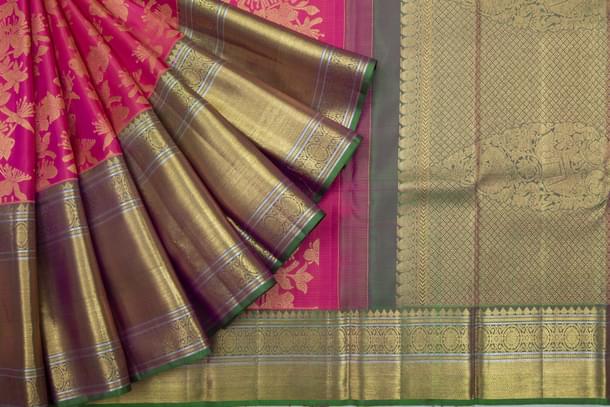
Hailing from the temple town of Kanchipuram in Tamil Nadu, the Kanjeevaram or Kanchipuram have been the first choice of Indian brides for their trousseau for centuries!
Kanchipuram sarees are known for their bright, festive colours, for the quality of silk used and for the intricate zari work on the pallu and the borders. Woven with pure mulberry silk, Kanchipuram Pattu sarees brighten up Indian festivals like no other saree.
The highlight of the #kanchipuram silk sarees are the contrast borders and pallu that are attached to the body in a manual interlocking technique that is known as korvai. Kanchipuram sarees feature motifs inspired from temple sculptures like the yazhi, elephant, peacock, the two-headed eagle known as gandabherunda, rudraksha and lion.
Kanchipuram sarees are usually accessorised with traditional temple jewellery in gold for the festive look.
2. Paithani

Once known as the Mahavastra of Maharashtra, Paithani sarees have enjoyed an exalted status as the royal textile of the Maratha court.
Woven in the ancient temple town of Paithan and Yeola, Paithanis are an extremely rich, luxurious fabric that is woven using pure silk and pure silver dipped zari. Paithanis are brocade sarees handwoven using a traditional tapestry technique. A unique feature of the handwoven Paithani is that the motifs look identical on both sides of the fabric.
Paithanis are woven using traditional motifs like peacock, lotus, Asawali, bangdi mor and muniya as well as contemporary motifs like musical instruments, Radha-Krishna etc.
The quality of silk, zari and the efforts involved in weaving make Paithani sarees expensive, but they are heirloom textiles that can be passed on for generations.
3. Chanderi
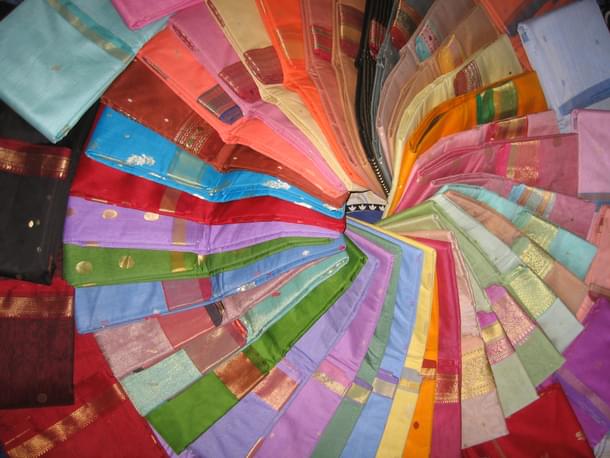
Chanderi sarees are famous for their light weight, easy drape and gossamer texture. Woven in Chanderi town of Madhya Pradesh, Chanderi sarees are a great choice for semi-formal occasions like Deepavali parties and family get-togethers.
The shimmery, sheer texture of the Chanderi saree is a result of silk and cotton threads which are interlaced to weave the saree. Chanderi sarees cover a wide colour spectrum from the subtle ivory and gold classic combination to the most vivid colours possible. The bootis or motifs woven in the Chanderi saree add to its beauty.
The unbeatable combination of an elaborate zari border and bootis on a glossy sheet fabric make Chanderi sarees a wardrobe staple. Chanderi sarees in pastel shades or bright pinks, blues, and reds are perfect for both daylight events, as well as evening parties.
4. Pochampally Ikat
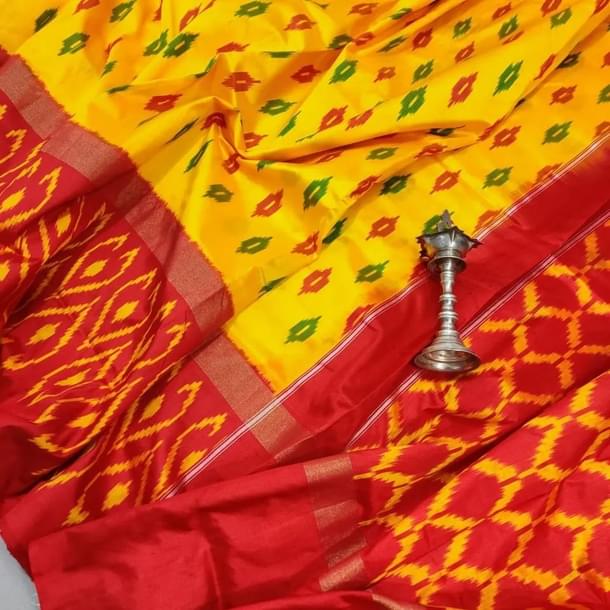
Ikat is a weaving technique practised in many states of India. In ikat weaving, the yarn is tied with dye resistant bindings as per the desired design and then dyed. When the bindings are then untied, the yarn displays the design that is then woven on the loom. The tying and dyeing takes place in multiple stages as per the design specifications.
When only either the weft or warp are tie and dyed, the resultant textile is called single ikat. When both the weft and warp are tie and dyed, it is called double ikat.
Telangana has weaving clusters that weave both single and double ikat sarees. Known popularly as Pochampally Ikat sarees after the weaving cluster, the Ikat sarees of Telegana are unique and versatile. Woven both in cotton and silk, Pochampally Ikat sarees are a great choice for Deepavali festivities. As they have minimal zari, they double up as great work wear choices too.
5. Banarasi
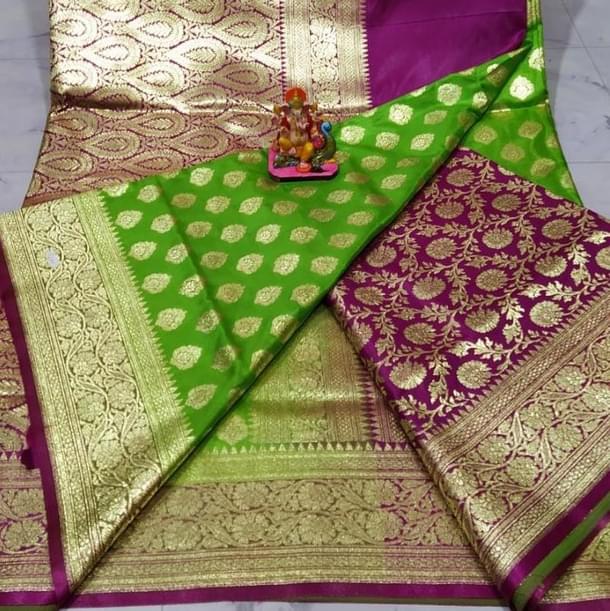
The temple town of Banaras or Kashi has been renowned for its rich handwoven textiles for thousands of years! Banarasi sarees are renowned for their opulence, intricate designs, and luxurious feel.
Banarasi sarees are traditionally handwoven on pit looms using pure mulberry silk threads and zari. Banarasi sarees are known for their intricate zari work using motifs inspired by nature, flora, fauna as well as abstract and geometric designs.
Over time, Banarasi saris have evolved to incorporate various new design elements and techniques such as brocade work, embroidery, and embellishments. Banarasi saris are available in a wide range of yarns including silk, katan or satin silk, tussar, organza, georgette as well as in cotton.
Banarasi sarees make a great addition to any woman’s festive wardrobe!
The writer is a freelance writer and newspaper columnist based in Pune.





